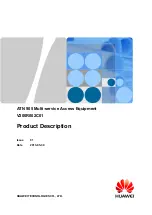
Page 2 of 130
Abstract
Telecommunications is world’s largest industry, bringing people together. Its establishment
took a long time and it is in continuous improvement till date. The telecommunication state of
art infrastructure in present day is the combined result of hard work that the network
engineers and field technicians put in over the past century. I can guarantee that this
infrastructure will be far more advanced in the future than we can imagine. The network is
growing with each passing day and it is all attributed to the people who are building it. This is
the main reason which inspired me to take this course in the first place. The fascination for
networking started as a kid when I wondered how my computer was connected to a world wide
web. Data being sent and received from one computer to other fascinated me.
Looking at the vast network of cables and wires laid underground and aerially, it is not hard to
estimate the effort which goes into the repair and maintenance of these things. If we have to
remain one day without internet at our homes due to a faulty wire it is a disaster. And it would
mean a financial loss for any enterprise running today if their networks went down. As such the
toughest part is the maintenance of the networks. For the physical medium of a network, this
job is done by Field Technicians who are working at the physical end ; installing and repairing all
the telecom connections.
This project majorly revolves around the implementation of physical layer of a network. The
project stems from the fact that as internetworking graduates, one can have a future job
prospect as a field technician but there are critical aspects of the nature of this job, which need
to be studied and practically analyzed. I have given my best efforts to discuss the various
aspects of the work a field technician might be involved with and the various tools used by
them.
Submitted to:
Dr. Mike MacGregor
Director MINT Program &
Professor Department of Computing Science
Submitted by:
Parul Khara



































